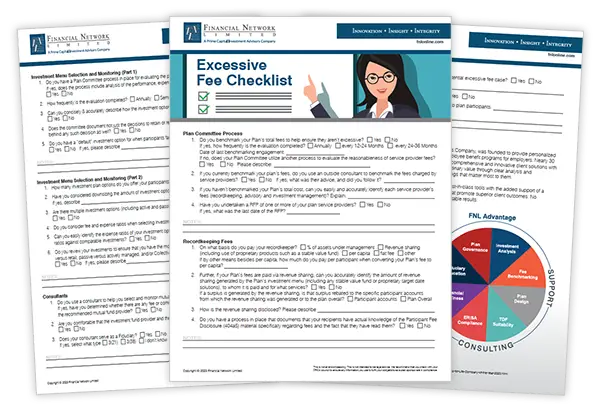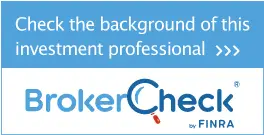Download the Excessive Fee Checklist

This Excessive Fee Checklist will help with:
- Your Plan Committee Process
- Reviewing Recordkeeping Fees
- Investment Menu Selection and Monitoring
- And more!
A Primer on Retirement Plan Fees
The Employee Retirement Income Security Act (ERISA) requires that Plan Sponsors and Fiduciaries act in the best interests of the Plan Participants and beneficiaries. Therefore, any retirement plan fees incurred must be reasonable and directly related to the administration and management of the plan. ERISA does NOT require fees to be the cheapest – it does however require them to be reasonable based on scope and frequency of the service.
Common fees paid by Retirement Plans include, but are not limited to the following:
- Investment Management Fees: Charges for managing the investments within the retirement plan, often a percentage of assets under management (AUM);
- Administrative Fees: Fees for plan administration, recordkeeping, Trust/Custody of assets and other services required to maintain the plan;
- Transaction Fees: Fees associated with buying and selling investments within the plan;
- Advisory Fees: Fees for financial advice and guidance related to the retirement plan;
- Legal and Compliance Fees: Fees for legal and regulatory compliance services related to the retirement plan.
Fees that are Excessive can erode returns on investment, reducing a Participant’s overall retirement savings. It’s important for Plan Sponsors and Fiduciaries to carefully review and understand the fee structure of their retirement plan. Comparing fees across different plans and ensuring they are reasonable and in line with industry standards is crucial.
Regulatory bodies like the U.S. Department of Labor (DOL) provide guidelines and regulations to ensure that retirement plan fees are reasonable and transparent. If you suspect excessive fees in your retirement plan, we can provide relevant advice and guidance and also help you to implement generally accepted best practices.
